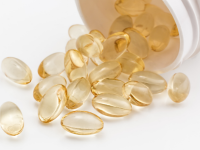Resource Library
Search >>
Welcome to the Eurofins US Food, Feed, and Supplement testing laboratories resource library.
Here you will find blogs, webinars, scientific articles, videos, case studies, white papers, and more about the services we offer for your industry.
Use the box below to search, or click on the service or industry link that you would like to review resources for and you will be taken to all of the resources we have on that topic. Please reach out to us if you are looking for information and do not see it here!
Search >>
Service:
Allergens
Authenticity
Contaminants
Dairy
Environmental Monitoring (EMP)
Food Microbiology Process Validation
GMO Testing
To view by media type, use the buttons below.
Eurofins News:
Selecting the right microbiological testing method isn’t just about speed or cost. It’s about risk management, product integrity, and regulatory compliance. Click to read about the strengths and limitations of different methodologies essential to avoid false negatives, regulatory citations, or costly recalls.
In the world of dietary supplements and food testing, unexpected results like failed specifications, out-of-spec (OOS) results, or surprising contaminant detections can be unsettling, but they’re not uncommon. Here’s how to navigate the process when results don’t align with expectations.
When it comes to refrigerated and frozen foods, shelf-life testing isn’t just about timelines, it’s about protecting your brand, your label claims, and your consumer’s experience. In this Ask the Expert feature, Sam Wiesenfeld shares insights into the most common questions clients face when designing shelf-life testing protocols for refrigerated and frozen foods.
When it comes to dietary supplement testing, one seemingly small detail can have outsized consequences: specifying the correct vitamin form. Understanding and communicating the exact vitamin form in your product is not just a technical necessity, it’s a strategic imperative in ensuring accurate results, timely reporting, and regulatory compliance.
A supplement manufacturer added methylcobalamin (Vitamin B12) to a product, expecting to meet label claims. However, testing revealed only ~50% of the claimed amount, triggering an out-of-spec (OOS) result. Read to learn how Eurofins Supplement Testing resolved the unexpected results.
Switching oil sources, or developing a new product with an alternative oil, requires more than a label change. It demands a holistic view of how the oil behaves in your product, how it interacts with other ingredients, and how it holds up over time. Click to learn about the key considerations.
Protein analysis is typically based on a Nitrogen analysis and assumed factors to calculate protein. Since proteins are not the only source of Nitrogen, Protein analysis can be falsely inflated by a variety of ingredients and other food components. Check out this infographic to learn more about non-protein nitrogen.
The bar aisle is brimming with possibilities—and today’s consumers are more curious and discerning than ever. As expectations rise around flavor, texture, and ingredient transparency, brands have a unique chance to reimagine what a bar can be. This webinar explores the dynamic evolution of the bar category, especially protein bars, and reveals how thoughtful innovation can help your brand rise above the noise and truly connect with consumers. Originally Aired on November 5, 2025
After months of fine-tuning flavor, texture, and active ingredients, a new nutritional formula was ready for scale-up. This case study explores the successful transition from lab-scale to full-scale production—preserving product integrity across thousands of gallons.

























